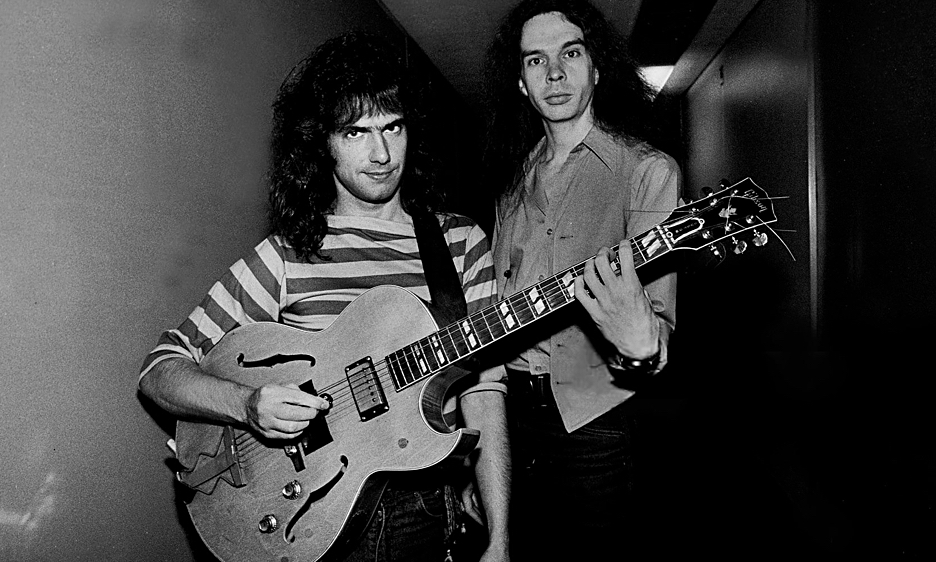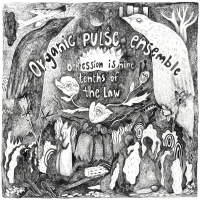Home » Jazz Articles » Jazz Ed » Five Killer Comping Strategies
Five Killer Comping Strategies

Whenever an additional tactic occurs (and it will, with time), immediately jot down your fresh concept and then choose another small handful of tunes you know intimately to develop over... and watch an embarrassment of riches spread into all of your ensemble playing.
- Accompany in the way(s) you always do, yet now insert much more intentional quiet space until re-entering only at critical harmonic turnarounds, key changes, and/or bridges, as experienced performers generally don't need or want to be spoon-fed changes continuously. Such an approach also will better stagger and vary any group's orchestration textures, often leading to greater spontaneity plus conversational interplay throughout.
- Craft beautiful and lush "open spread" chord voicings, perhaps even arpeggiated, as appropriate—moving them only when necessary—at a lingering, relaxed pace such that soloists may literally luxuriate in your color(s). Ralph Towner is a master of this approach, as is Bill Frisell.
- Employ single lines as a kind of flowing counterpoint, behind/with the main soloist, landing on (or starting on) occasional, spare two-or three-note chords. I first noted John Abercrombie utilizing such accompaniment tactics on several '70s recordings for ECM, and I wonder if he first stole his inspiration from Thelonius Monk(?). Honing this approach initially over open forms, such as with Ornette Coleman-inspired 'free' tunes, can prove an advantageous tactic before weaving over standard harmonic song forms you have readily internalized.
- Occasionally, during a set, contribute non-harmonic percussive colors & textures—inspired by "free/modernist/avant-garde" music(s)—in the intervals between a tune's pivotal harmonic moments (via a few well placed chords), over multiple consecutive choruses, as this will invite fresh improvisational terrain and connectivity in contemporary ensembles.
- Intentionally "play nothing" for extended periods of time (bars & bars & bars &...), then introduce a percussively placed chord suddenly (or as many as perhaps three?), thoughtfully voiced and articulated, further proceeding to craft more such punctuations over contrasting points during upcoming choruses. Talk about adding unpredictable excitement for any soloist or group! Herbie Hancock, with Miles Davis' second great quartet, was a notable 1960s instigator of this tactic. Oh, and once you've re-entered the fray, "staying in" creates another fabulous opportunity to keep everyone's pot well stirred.
Now, for each of these five core approaches, select a small handful of favorite tunes (you truly love) to practice, develop, and wed with each strategy. After perhaps a month or more, once you have a solid handle on such techniques for each tune selected, cultivate a second contrasting method—choosing a combination of two discrete prepared-in-advance approaches for every tune you wish to expand upon (avoiding like pairings on comparable tunes will provide even more flexibility in one's ability to accompany freshly).
Practicing just these accompaniment homework strategies, especially before important sessions, performances, tours, or recording dates, can explode one's professional creativity within just a matter of weeks and months, plus, you won't necessarily need as much advance planning to be similarly creative in future endeavors, as you'll be able to more readily imagine creative approaches in real time—perhaps akin to some sort of Jedi mind tricks (a la Star Wars, yo!)—with increasing ease and flexibility. Regardless, learning to spaciously vary one's accompaniment conceptions artfully is key.
One more thought: whenever an additional tactic occurs (and it will, with time), immediately jot down your fresh concept and then choose another small handful of tunes you know intimately to develop over—in addition to the other two contrasting approaches hopefully previously learned—and watch an embarrassment of riches spread into all of your ensemble playing. Now dig them big apples!
Do let me know if this is helpful to your own ensemble performances, or if you have any duly considered questions(?), as I'm always listening...
Tags
PREVIOUS / NEXT
Support All About Jazz
 All About Jazz has been a pillar of jazz since 1995, championing it as an art form and, more importantly, supporting the musicians who make it. Our enduring commitment has made "AAJ" one of the most culturally important websites of its kind, read by hundreds of thousands of fans, musicians and industry figures every month.
All About Jazz has been a pillar of jazz since 1995, championing it as an art form and, more importantly, supporting the musicians who make it. Our enduring commitment has made "AAJ" one of the most culturally important websites of its kind, read by hundreds of thousands of fans, musicians and industry figures every month.






















